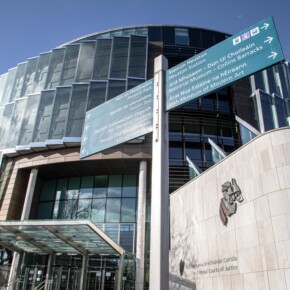Cuffe calls for housing at Dublin Port
Padraig Conlon 17 May 2023
Dublin MEP Ciarán Cuffe says he is calling for land at Dublin Port to be repurposed for housing and other mixed use development.
In a submission to a public consultation, MEP Cuffe highlighted that Dublin needs more affordable housing that is located close to the city centre, and suggests that lands located at the 260 hectare Dublin Port site could be suitable for this use.
In the same submission, he also expressed strong concerns about the climate impact of the continued expansion of port facilities.
He proposed that Dublin Port’s strategic approach merits reconsideration on the basis that the projected growth in port traffic is inconsistent with the Government’s Climate Action Plan.
Commenting on his submission, MEP Cuffe said:
“The two great crises of housing and climate change have come to define our lives.
“On both issues, the proposed port strategy represents a missed opportunity at best and a crisis accelerant at worst.
“Investment in housing remains chronically low in comparison with our European peers, and our Port strategy should be helping us fix that.
“Meanwhile, in the context of our transition to a circular economy, a development strategy centring on ever-increasing imports of consumer goods makes little sense.
“The purported economic benefits of the proposal are also dubious.
“Direct employment in the Port has decreased dramatically per unit tonne, and there is little reason to expect these trends to reverse.”
MEP Cuffe’s submission also called for a greater emphasis on rail freight in the port proposal, including the “relocation of certain functions such as oil and container storage to a new location close to the rail network, and the reinstatement of rail services to and from the port.”
Finally, MEP Cuffe says the proposal is incompatible with a sustainable transport network for Dublin:
“The proposed transport infrastructure is heavily road-based and discourages walking and cycling in an area that attracts considerable numbers of visitors who could avail of footpaths, cycle lanes or public transport to access the beaches of the Poolbeg Peninsula and the Great South Wall that fall within the Dublin Bay.”











